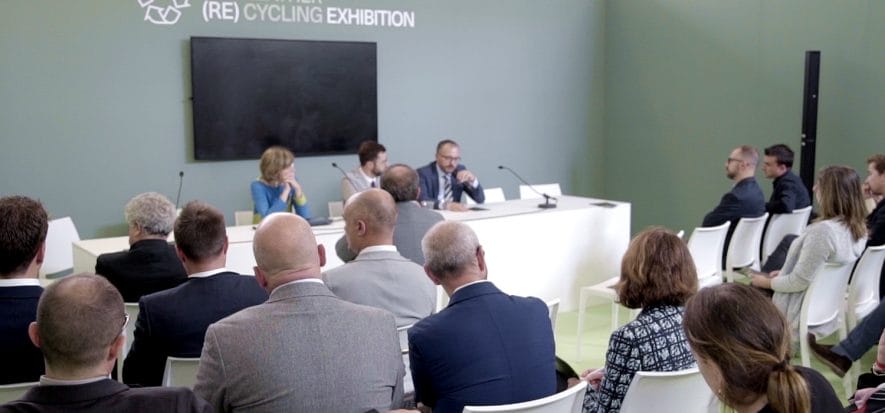The Leather (re)cycling Exhibition presented an afternoon event yesterday. Lineapelle97 circular laboratory, where visitors may see and experience the multiple activities with which leather industry ends its own valuable cycle.
The reasons for the project
“Here we wanted to show and present the main outputs about the recycling of waste materials coming from processing. Aiming ideally to continue the summit arranged during Lineapelle last edition (in collaboration with Confindustria, editor’s note) – points out Fabiana Orlandi, environment supervisor at UNIC – Italian Tanneries -. Italian tanneries put much effort into that, but perhaps we have to do something more as regards communication”. While standing before the incubator, created at hall 14, some of the most important recycling industry players described their excellence cases during the meeting “Circularity in the leather industry”, coordinated by Nicola Camurri, co-founder of FEI (Forum Economia Innovazione).
The scraps of waste
All subjects who took part in the event built up their activity while enhancing what leather industry, based on the recycling of waste products coming from slaughtering, considers to be a scrap. “We work with protein residues of shaving, therefore obtaining products that we process to get bio-stimulants”, said Giancarlo Bernini, director of Consorzio SGS. Likewise, such is the process carried out by SICIT, which developed advanced technologies to recycle fleshing waste, outlined by Andrea Pavan, supervisor of the Technical and Environment Department in the company based in Arzignano (Vicenza). Dal Maso Group recycle salt from raw hides. As explained by general manager Christian Dal Maso, “After cleansing meat, hair and nylon, we transform it into raw material employed by municipalities for road antifreeze”. Consorzio Aquarno plant receives from tanneries chromium exhausted bathing: chromium first undergoes a chemical process, then filtering. “In doing so, points out Andrea Giachi, consortium R&S, we manage to recycle and return to companies 85% of chromium formerly used”.
New frontiers
“One of the several projects we are working on focuses on the recycling of finished leather and cuts of shoes and leather goods. Of course, they must undergo a chemical process to obtain a chromium-based product that can be used again. Alternatively, as well, proteins for agriculture, points out Domenico Castiello, director of Po.Te.Co. Another project, developed in collaboration with University of Pisa, focuses, instead, on getting dyeing stuff deriving from food waste, such as banana peel, nuts hull or curcuma”.










